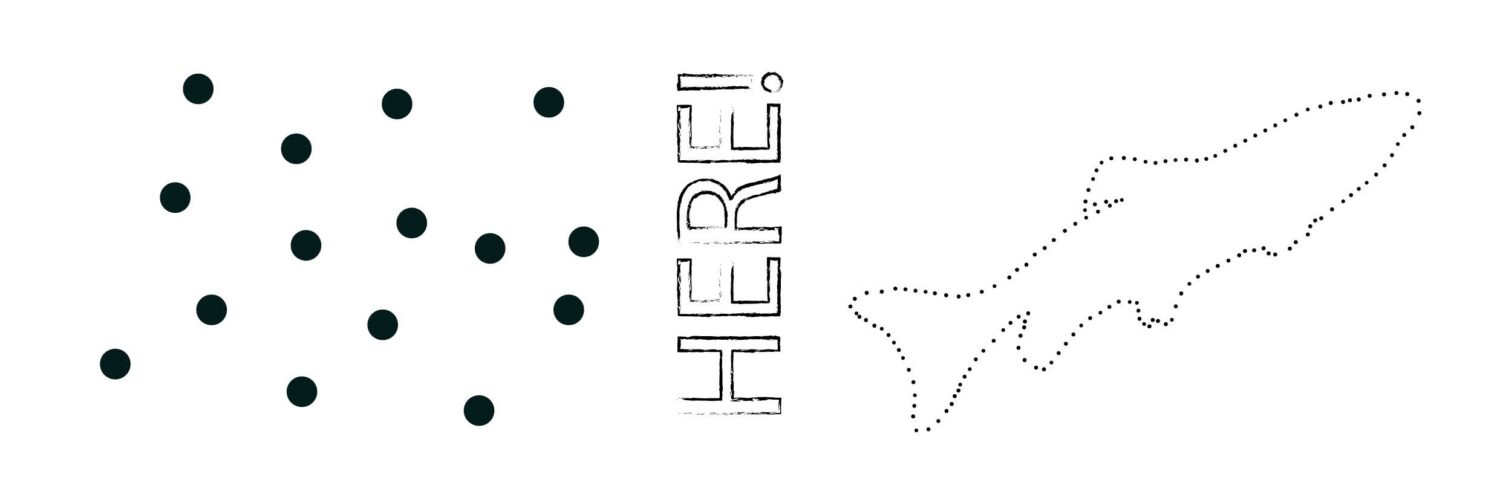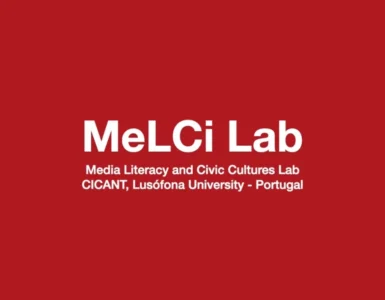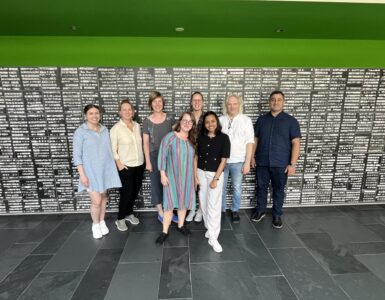by Greg Fantham and Lucy Kendra, Heriot-Watt Univerisity, UK.
Meaning in media content is derived not from one source, but from multiple – e.g. sound,
image, tone, timing – the message resonating somewhere inbetween, to be discovered and
rediscovered by the individual. Here, the concept of ‘dots’ is used to explain how the use
and application of media can be effectively applied to educational contexts. It is informed
by the cocreation of content for an online MSc in Business Psychology between our team
(Digital Media Production, Heriot-Watt Online) and Greg Fantham, Assistant Professor,
Heriot-Watt (Dubai).
This content is a section of the ‘Keeping the Academic in the Loop’ presentation, part of the
‘Let’s Have a Footnote at 2’33”’ session at the Media and Learning Conference, 2023.

If I ask you to join up these dots [A] however you like, and that’s that, with no follow up, I’m not doing anything for you. Like, this is a course about fish. Write me an essay about fish.

On the other hand, I could ask you to join up a configuration of dots that is so prescriptive that I’ve done everything for you [B]. Like, tell me what I’ve just told you about fish.
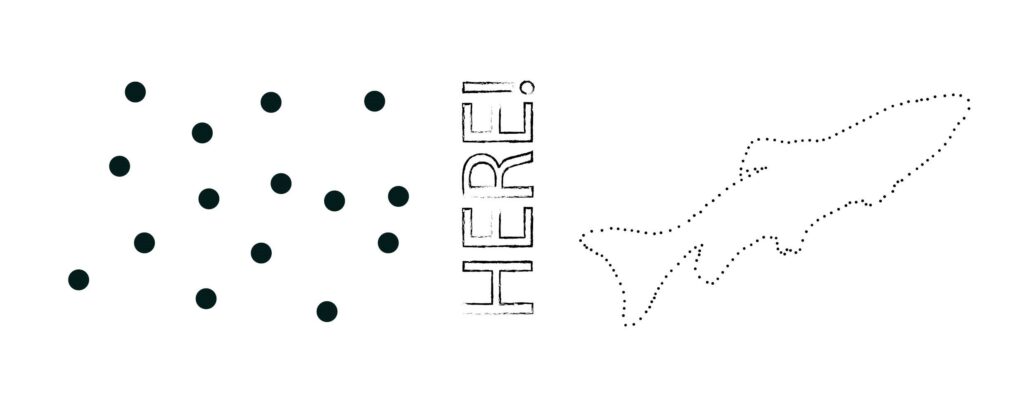
And this is our problem space, in which to frame suitable mixes of cue legibility, guidance and freedom – spreading the breadcrumbs in the right ways – to tap into the student’s inquisitiveness and creativity.
There are two direction for us to go with this.

One is drawing by numbers [C]. Follow the numbers to join the dots, so gradually the answer will reveal itself to you, and the effort you invested confers ownership of it. Like, do exercises 1 to 8, and by the end you’ll know this about fish.

The other is drawing by dots as landmarks [D], to facilitate overall proportions while permitting freedom of flow in between. To trigger this, the designer must sculpt and ‘sell’ a prototype of the ‘target’ idea as a stimulus to informed creativity. Like, this is fishiness, now what do you want to do with it?
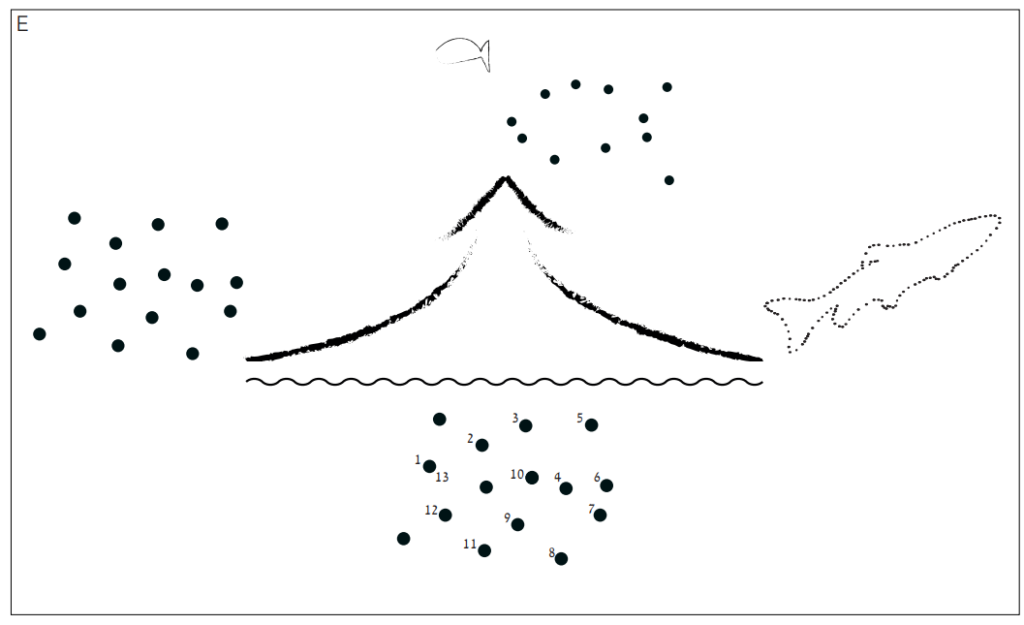
There are places for all of these approaches [E], and much in between, but what we’re aiming for is [D]. This scope – this requirement – for creativity and digression leads the student to give to us their aha! experience, which propels the inquiry above the ChatGPT level (the wavy line).
The indispensable role of media is to sell that prototype through worlds of image and sound; to ensure that students have a feeling of knowing the Big Idea before discovering it, and to offer multiple ‘ways in’ to that discovery.
Greg Fantham and Lucy Kendra CC-BY 4.0 Heriot-Watt Univerisity 2023
Authors

Greg Fantham, Heriot-Watt Univerisity, United Arab Emirates.

Lucy Kendra, Heriot-Watt Univerisity, UK.

